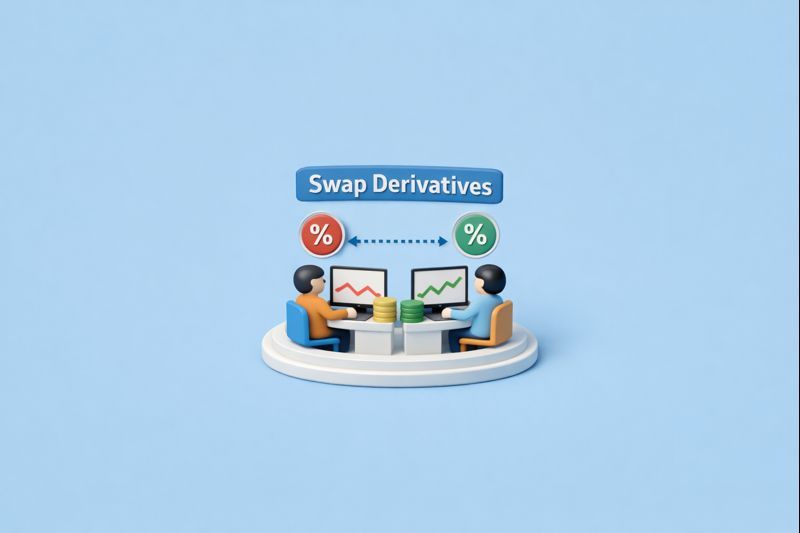How To Sell IPO Share On Listing Day

- Published Date: December 21, 2021
- Updated Date: October 14, 2025
- By Team Choice
Have you applied for an IPO and don’t know what your exit strategy ought to be? What will you do once IPO allocation reflects on your trading platform? How to sell IPO on listing day?
Many investors apply for IPO but still many are unaware of how does IPO allotment works.
This makes it even more important to consider the above queries resolve them promptly as IPO investment opportunities are rare hence demand timeliness. Therefore, it’s not just enough to know what IPO to buy and how to buy an IPO, but also the selling strategy for an IPO.
IPO listing takes place after the three-day IPO period when traders subscribe to shares. The day on which an IPO finally gets listed on the exchange is known as listing day. And the price at which an IPO debuts on a listing day is known as IPO listing price.
Consider various factors of how listing price is decided and make a decision of filling IPO application.
So, the question can i sell IPO on listing day is a valid one but before we answer that, let’s find out whether or not it’s possible to sell IPO on listing day.
Can We Sell IPO Shares On Listing Day
IPO trading starts with the market opening time on listing day. Therefore you can’t sell prior to this moment. Hence IPO shares can be sold at or after the beginning of the normal trading session on listing day. So, can you sell IPO shares immediately, once listed?
However, investors utilize the pre-market opening session i.e. 9:45 am to 10:00 am on a listing day to place their orders on an online trading platform or via a call and order servicing
One other reason why investors tend to utilise the pre-market session is that the price of the shares in the pre-market session is a good indicator of where the IPO is heading in terms of returns on investment.
Now that we have made it quite clear that it’s possible to sell your IPO shares on listing day, let’s come back to our primary query of how to sell an IPO share on listing day.
Open a FREE Demat Account in 5 Mins.
- Free AMC for First Year
- Low DP Charges (₹ 10)
- No Auto Square Off Charges
- Free Research Calls
How To Sell IPO Shares
The selling of an IPO is quite similar to how you sell any holdings using a trading platform. However, you will have to wait for IPO share allocation before these shares reflect on your holdings dashboard on the trading platform.

As we said before, the pre-market session can be used to place sell orders if one wishes to sell IPO shares on listing day. The process for this is pretty basic.
First, you choose the option of the “sell” order. Then you have to set some parameters such as the price at which you wish to sell once the IPO gets listed.
Next, if the listing price is equal to or more than the expected sell price then your order will get executed, otherwise, the order gets cancelled. Yes, the process is that simple.
Another strategy for selling on a listing day is that an investor can divide the total number of shares allocated into two parts. The first portion can be sold on listing day and the rest can be kept as a long-term investment. This is a clever way to maximize profits.
Now that you know how to sale IPO shares on listing day, it is vital to check whether it’s really feasible to sell it on listing day. In other words, it’s important to determine how profitable it really is to sell shares on listing day.
Can I Sell IPO Shares On Listing Day
Interestingly, market researchers have found that historically almost 50% of IPOs listing day price was higher than the year-end price. In fact, many of the IPOs have registered lower year-end gains for investors compared to the listing day gains.
So there is no doubt that selling IPO shares on a listing day during special pre-open time is an efficient exit strategy. Also, it has been noticed that once an IPO gets listed, the prices tend to plummet as the market trends and investor sentiments start to influence the shares.
Many past IPOs have shown 70%-80% of returns in pre-market sessions, hence several analysts recommend placing orders in the pre-market session period itself. In fact selling IPO shares on a listing day is one of the best ways to earn money in share market.
To see it factually, the year-to-year end prediction of the price of an IPO share is too difficult a task as there are too many factors that can affect the price of a share during a long-term period. Hence, considering selling on a listing day can minimize losses, at the least.
Conclusion
Several traders who invest in IPOs fall into the trap of waiting game, sometimes out of pure greed. No doubt the end goal of all investments is to make profits but objectively making decisions pays in the long run.
So next time an IPO is about to get allocated, strategize your entry and exit positions before you actually place orders. And in case you don’t know how to apply for IPO, you can read our blog as we cover a vast number of topics surrounding IPOs. Good luck!!
Recommended for you

FII DII Data - Live Data

Share Market Prediction For Tomorrow

Market Prediction Today (24th December 2025)
